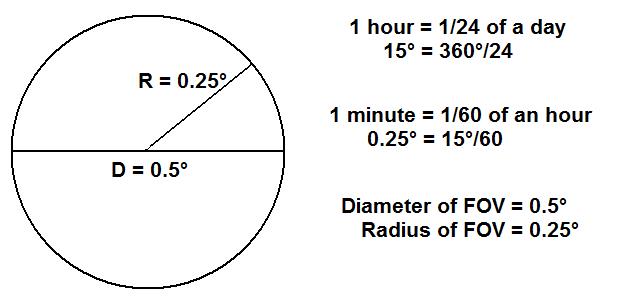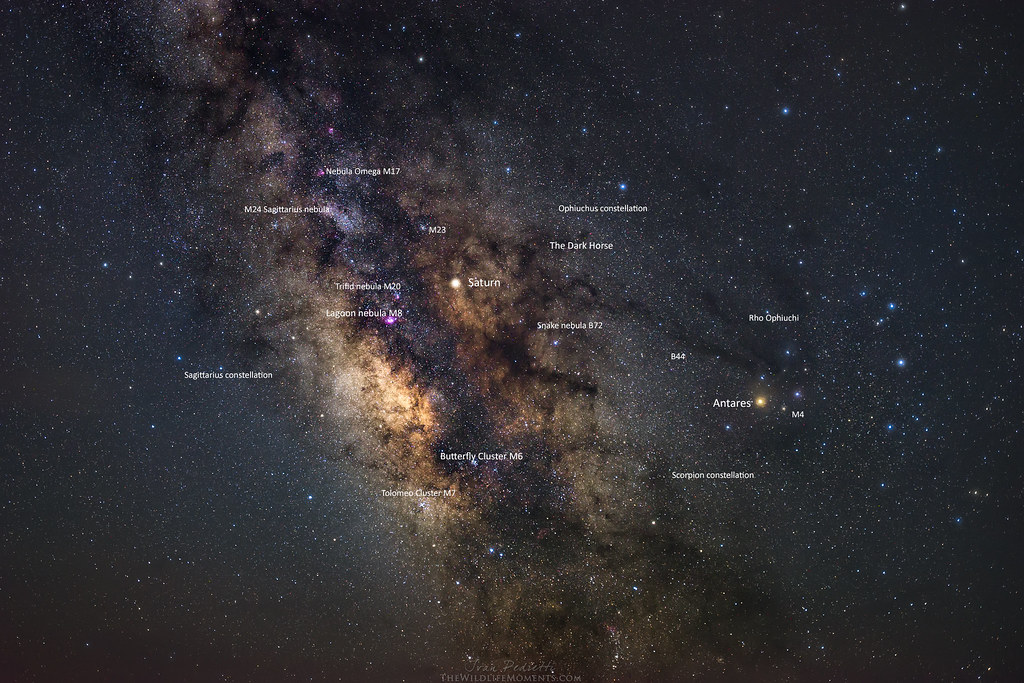Glizdka
Key Member
- Joined
- Apr 13, 2019
- Member Type
- Other
- Native Language
- Polish
- Home Country
- Poland
- Current Location
- Poland
I'm not sure where I should post this. Please move it to the appropriate section if it's needed. I know it's long, but there are drawings as an incentive. :-D
I would be greatful for help with any mistake I have made.
EDIT: Whenever I use a unit redefined by me, it is in blue to minimize confusion.
I'd always wanted to take a picture of the center of the galaxy. But those who have ever tried it know that you require a pretty dark sky. I decided to go to a nature reserve, and I actually did take the picture. I haven't used the word 'photograph' because it can't be done in a snapshot; I recorded the images in long exposure. With the field of view as narrow as half a degree (which is equal roughly to the size of the moon), I needed to use a tracking device for my telescope. This was when I came up with an idea for how to redefine what arcminute is.
We divided the circumference of the circle into 360 degrees, which coincides with the number of days in a year. This makes it convenient for calculating how much an object "moves" through the celestial sphere. If you correct for the 5.24 days off between the numbers, you can reliably and precisely predict where the object is positioned at any given moment or a day. However, even a simple calculation for "how much Antares moves in a month?" is easy to calculate when planning for a few days ahead due to that coincidence.

The distance Antares "moves" through the night sky in 30 days, relative to my geo-localization.
Between 10.06 (10th of June) and 10.07 (10th of July)
The image above is a true representation of the preceived path a star travels only for stars that appear low above the horizon because they are the closest to the equator of the celestial sphere (meaning their path is the closest to a straight line). Please mind that a correction for the Earth's axial tilt (roughly about 23°) is reqired when calculating for longer periods of time because it greatly affects the path as well.
The unit of the degree is too big for a fine-tuned alignment between the tracking device and the object it is to track (even the tiniest of inaccuracies can cause the image to be blurry). Enter the arcminute, one sixtieth of a degree, further divided into sixty arcseconds. With the level of magnification I used (about half a degree), the object leaves the central point of the telescope's field of view in 1 minute
 Instead of 0.25°, I could've used 15 arcmin, which would give a much more neatly looking whole number instead of a fraction. I discovered how convenient it would be if the arcminute were instead defined as one fourth of a degree. It would coincide 1 arcminute with how much Antares moves in 1 minute, and 1 arcsecond with how much it moves in 1 second.
Instead of 0.25°, I could've used 15 arcmin, which would give a much more neatly looking whole number instead of a fraction. I discovered how convenient it would be if the arcminute were instead defined as one fourth of a degree. It would coincide 1 arcminute with how much Antares moves in 1 minute, and 1 arcsecond with how much it moves in 1 second.
Why do I care about Antares so much? It is a very bright star close to the center of the galaxy I wanted to take a picture of. It's helpful to first track down some nearby star, and from there calculate for the exact nothing that is visible (unless when using long exposure). The picture below illustrates how close Antares is to the galactic center.

This is not the actual picture I've taken.
There is one problem with replacing ye olden arcminute (1/60 of a degree) with my, "better" arcminute. It's not precise enough for extremely high zoom, where even factions of milliarcseconds matter. Sixty is an easier number to divide than four because more integers divide evenly into sixty. 360 is even better; 10 is terrible. Some mathematicians prefer base twelve for calculations because of that reason, and some languages (such as English) have a name for the first twelve numbers even though they use base ten. Base four quickly requires using more subunits for representing higher fractions. 1 miliarcsecond in base 60 is equal to 0.0677 miliarcsec in base 4, or 6.77 microacsec.
I guess this fact makes my idea not worth it, and we should stick to the current arcminute, which is not badly defined.
I would be greatful for help with any mistake I have made.
EDIT: Whenever I use a unit redefined by me, it is in blue to minimize confusion.
I'd always wanted to take a picture of the center of the galaxy. But those who have ever tried it know that you require a pretty dark sky. I decided to go to a nature reserve, and I actually did take the picture. I haven't used the word 'photograph' because it can't be done in a snapshot; I recorded the images in long exposure. With the field of view as narrow as half a degree (which is equal roughly to the size of the moon), I needed to use a tracking device for my telescope. This was when I came up with an idea for how to redefine what arcminute is.
We divided the circumference of the circle into 360 degrees, which coincides with the number of days in a year. This makes it convenient for calculating how much an object "moves" through the celestial sphere. If you correct for the 5.24 days off between the numbers, you can reliably and precisely predict where the object is positioned at any given moment or a day. However, even a simple calculation for "how much Antares moves in a month?" is easy to calculate when planning for a few days ahead due to that coincidence.
The distance Antares "moves" through the night sky in 30 days, relative to my geo-localization.
Between 10.06 (10th of June) and 10.07 (10th of July)
The image above is a true representation of the preceived path a star travels only for stars that appear low above the horizon because they are the closest to the equator of the celestial sphere (meaning their path is the closest to a straight line). Please mind that a correction for the Earth's axial tilt (roughly about 23°) is reqired when calculating for longer periods of time because it greatly affects the path as well.
The unit of the degree is too big for a fine-tuned alignment between the tracking device and the object it is to track (even the tiniest of inaccuracies can cause the image to be blurry). Enter the arcminute, one sixtieth of a degree, further divided into sixty arcseconds. With the level of magnification I used (about half a degree), the object leaves the central point of the telescope's field of view in 1 minute
Why do I care about Antares so much? It is a very bright star close to the center of the galaxy I wanted to take a picture of. It's helpful to first track down some nearby star, and from there calculate for the exact nothing that is visible (unless when using long exposure). The picture below illustrates how close Antares is to the galactic center.

This is not the actual picture I've taken.
There is one problem with replacing ye olden arcminute (1/60 of a degree) with my, "better" arcminute. It's not precise enough for extremely high zoom, where even factions of milliarcseconds matter. Sixty is an easier number to divide than four because more integers divide evenly into sixty. 360 is even better; 10 is terrible. Some mathematicians prefer base twelve for calculations because of that reason, and some languages (such as English) have a name for the first twelve numbers even though they use base ten. Base four quickly requires using more subunits for representing higher fractions. 1 miliarcsecond in base 60 is equal to 0.0677 miliarcsec in base 4, or 6.77 microacsec.
I guess this fact makes my idea not worth it, and we should stick to the current arcminute, which is not badly defined.
Last edited: